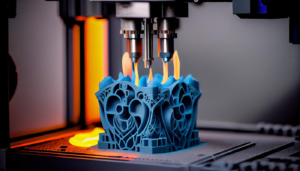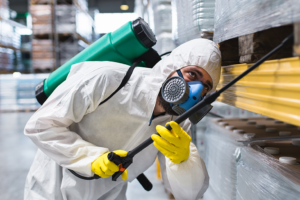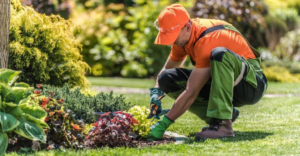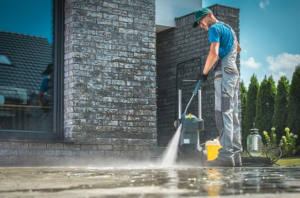Workers Compensation Arizona system provides benefits to employees injured on the job. It’s mandatory in most states for private-sector employers. Contractors and freelancers usually don’t qualify.
Policyholders can file a petition for reconsideration with the Workers’ Compensation Appeals Board Reconsideration Unit. This legal process reviews a decision by a workers’ compensation judge.

Generally, workers’ compensation pays for medical treatment related to a workplace injury or illness. Medical care can include hospitalization, doctor visits, physical restoration, therapy, dental work, prescriptions, x-rays and laboratory services. The workers’ compensation system also pays for some lost wages while you are unable to work because of your injury. The amount of your lost wages is determined by how many days you are out of work because of your injury or illness.
Depending on your injury, you may need to undergo surgery or other medical treatments. Some of these procedures are very expensive. You should not have to pay for these out-of-pocket expenses. You should not have to choose between your job and your health. In addition, the law provides you with entitlement to causally-related medical treatment, which means that your injury or illness was caused by your employment and not another cause.
Your employer and the insurance company may not agree on what constitutes a qualifying injury or illness. In that case, you can request an independent medical examination (AME) from the Division of Workers’ Compensation’s Medical Unit. The AME will evaluate your injury or illness and make a determination as to whether the treatment is needed. The AME will also provide you with a recommendation as to which doctor or treatment provider should perform your medical care.
If the AME’s recommendation is not followed, you have a right to appeal that decision to the Medical Review Panel. The MR Panel is composed of three doctors who are not associated with your treating physician. The Panel will review the evidence and determine whether or not your requested medical treatment is appropriate.
While workers’ compensation is a no-fault insurance program, that doesn’t mean it’s always easy to get the care you need and deserve. Some employers and their insurance companies are very averse to paying out claims. They may argue that your injury was not caused by the accident or that you have a preexisting condition. They may refuse to provide light-duty or transitional work. They may also try to delay or deny your medical treatment.
Temporary Disability Benefits
Known as workers’ compensation in most states, these benefits provide cash payments to compensate injured workers for a portion of their lost wages while they recover from their injuries. They also include medical treatment and career counseling. The exact rate, amount and duration of compensation varies from state to state, as does the availability of specific benefits, depending on the nature of an injury or illness.
The first benefit available to most injured workers is temporary disability, which pays two-thirds of a person’s average weekly wage before the injury or illness, up to statutory maximum limits. This is typically based on a five-day workweek, though some states use four or six days. These benefits will be paid until a doctor clears the injured worker to return to work or until a physician determines that the person can no longer work at their previous job.
After a time, a person may be able to return to work at reduced capacity, or to other types of employment that do not require their former level of skill or ability. If a medical professional deems that the injury or illness is permanent and stationary, the worker can apply for permanent disability benefits.
In some cases, a person will be unable to return to any type of employment and can receive transitional disability benefits. In these situations, a physician will determine that the worker can no longer perform any type of work and has reached a maximum level of recovery.
One common issue workers face with temporary disability benefits is having them terminated prematurely by their employer or insurance company. In order to avoid this, it is important that the injured worker follows their doctor’s orders and attends all medical appointments. In addition, if a worker believes that their doctor is making false or inaccurate statements about their condition or if they believe that the employer or insurance company is not acting in good faith, the injured employee should consider pursuing an appeal with the workers’ compensation board.
Permanent Disability Benefits
Unlike the other benefits provided by workers’ compensation, permanent disability benefits are based on a combination of factors, including the extent to which an injury has permanently impaired your ability to work. After an injury has healed to the point of maximum medical improvement (MMI), your doctor will determine if you have a permanent loss of use of certain body parts. If so, you will be deemed to have either schedule or nonscheduled permanent partial disability. Scheduled permanent partial disability is payable for a set number of weeks, depending on the specific body part.
The rationale for paying benefits for permanent partial disability is fairly straightforward: to replace in some measure a worker’s lost wages due to a severe impairment that will not heal completely. The rationale for compensating people with permanent total disabilities is less clear.
As with temporary disability benefits, permanent disability payments are tax-free. However, there is considerable variation in the way states implement the program. In particular, it is unclear what the most appropriate way to assess the extent of a permanent impairment is. The four approaches that are used in the United States include using medical records, physician reports, vocational assessments or a combination of all three.
Medical records are typically the most important factor in determining permanent impairment ratings. Physician reports are prepared by authorized treating doctors based on an evaluation of the injured worker’s physical condition. These reports typically follow the edition of the American Medical Association Guides to the Evaluation of Permanent Impairment.
A vocational assessment is usually required for injured workers who are rated as permanent and totally disabled. This is to help determine the type of work that the individual can do and whether or not he or she will be able to find employment. The assessment will usually be conducted by a certified vocational rehabilitation specialist or by another vocational expert.
Despite the wide range of workers’ compensation programs across the country, there are some common characteristics shared by most victims who are determined to be permanently and totally disabled. For example, they often have a history of engaging in arduous physical labor, and are unlikely to be able to perform other types of jobs unless they can obtain training or education.
Death Benefits
Workers’ compensation is a type of insurance that provides medical care and cash benefits to employees who are injured on the job. It also pays death benefits to the families of workers who die as a result of a work-related accident or illness. It is a no-fault system and does not require the worker or the employer to establish fault for the injury or death.
Generally, a deceased employee’s family members are entitled to a weekly cash benefit equal to two-thirds of the average weekly wage. This benefit may not exceed a maximum amount established by state law. Typically, the beneficiaries are the deceased worker’s spouse and children (including stepchildren, adopted children, or any other legally recognized dependents), or their estates. Spouses are eligible to receive compensation until they remarry, and children are eligible until they reach age 18 or 23 if they are full-time students. Other family members may be eligible depending on state-specific criteria.
Insurance companies may offer workers’ comp coverage through a number of different policies, each with its own set of provisions and requirements. The policy that an employer selects will depend on the type of business, size of the workforce, and other factors. The policy can include a variety of optional endorsements, such as a rider that covers funeral expenses.
The cost of premiums varies by state, with large employers typically paying more than smaller employers. However, the premiums are typically based on the experience of an employer’s workforce, so an experienced employer will pay less than a newer one. Additionally, some states have programs that allow employers to purchase workers’ comp coverage through a discount program. These programs usually have a higher premium, but they also provide other benefits such as discounted medical treatment and lowered loss costs.
The National Federation of Independent Businesses maintains a summary of each state’s workers’ comp requirements, including the minimum amounts of coverage. Most states require private insurance companies to fund the majority of their workers’ compensation programs through premiums paid by employers. Each state has its own workers’ compensation board that oversees the program and intervenes in disputes. The federal government also has a separate workers’ compensation program that covers federal and energy employees, as well as longshore and harbor workers.








